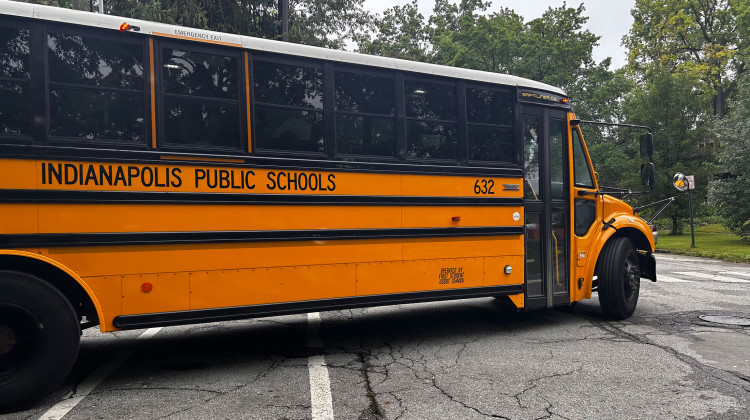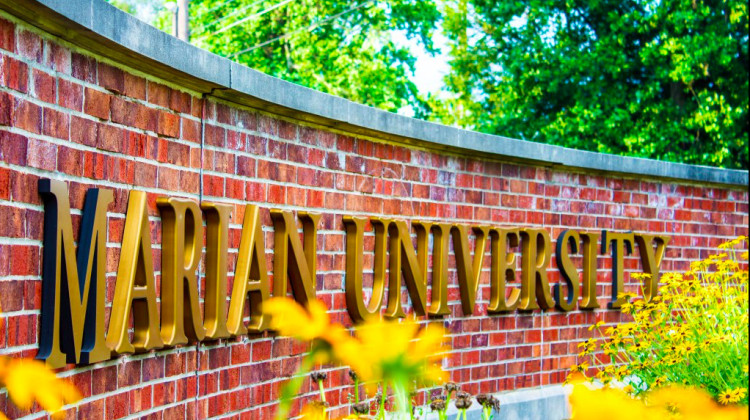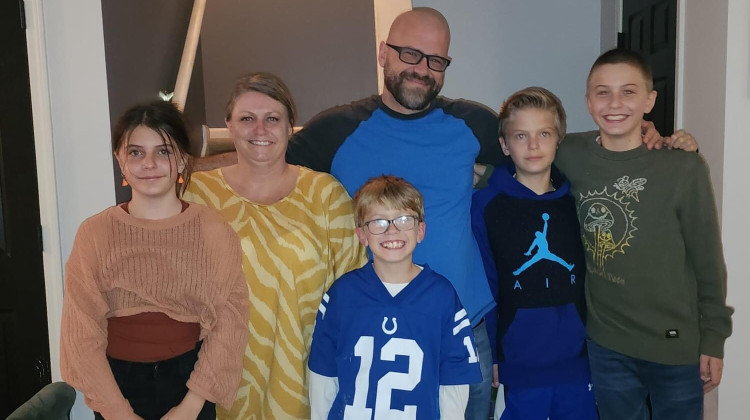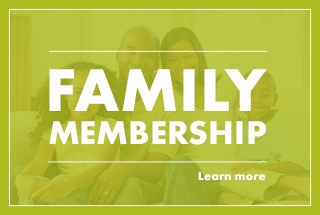
Lead kindergartner teacher Liz Amadio, right, works with students at Enlace Academy, Tuesday, April 14, 2014. Much of the instruction at the school takes place in small groups. The charter school, with 55 percent English-language learners, uses a blended language learning approach. Photo by Kelly Wilkinson/The Indianapolis Star.
A quarter of all students in Indy charters will be English language learners by 2020
Mariama Carson’s dream is to open a charter school unlike any other in the state focused on learning two languages at once.
If she gets the go-ahead, students from Kindergarten to eighth grade will exclusively speak Spanish half the day and English the other half. Teachers will drill lessons in grammar, math and culture in both languages with the goal that they graduate fully bilingual.
As the number of English language learners in Indianapolis charter schools swells — it could reach a quarter of charter school enrollment by 2020 — some schools are becoming beacons for a fast-growing Latino population.
Three charter schools in particular are trying new approaches.
Carson’s plan for the Global Preparatory Academy, if approved, is primarily aimed at the explosion of immigrants moving to the city’s Northwest side in Lafayette Square. Enlace Academy, also on the Northwest side, makes broad use of new technology while mostly serving English language learners. And Christel House Academy South has added more one-on-one teaching as its enrollment of language learners has grown.
The freedom to innovate is supposed to be what sets apart charter schools, which are free and publicly funded, but privately managed outside of school district control.
Freedom doesn’t always equate to success. For example, four low-scoring Indianapolis charter schools will close this summer.
But new research might suggest some charter schools' innovations are helping English language learners succeed.
A national study released last month found that English language learners in Indianapolis charter schools outperformed those in the city’s traditional public schools in reading and math. Stanford University’s Center for Research on Education Outcomes, or CREDO, analyzed data from 2006 to 2011 for the study.
The comparison used a measurement called “additional days of learning,” and it found Indianapolis charter school students learning English as a new language gained an additional 65 days of learning, or about one-third of the school year, more than similar students at Indianapolis Public Schools.
Others are skeptical.
Jonathan Plucker, a University of Connecticut education psychology professor and former director of Indiana University's Center for Evaluation and Education Policy, said comparing an average of large groups — such as the difference between students at charter schools and a public district — might not be the best way to look at the data.
He said he wouldn’t base too much thinking on one study.
“How can we get student growth for all of these students higher and not just look at this one average data point?” Plucker asked.
Rafael Sanchez, a Hispanic community leader and Indianapolis Chamber of Commerce board member, said charter schools, publicly funded vouchers that help families pay private school tuition and other choice options are unfamiliar to many Latinos and other immigrants.
Any school, he said, that wants to appeal to immigrant families need to have the proper “ecosystem” of diversity in teaching and a staff that can relate not just through language but cultural sensitivity.
“There is a wait-and-see approach within the Latino community,” he said about charter schools, even as some, such as Enlace, are making inroads with Hispanic families.
Traditional public schools, such IPS, feel more familiar, Sanchez said.
Using computers to help language learners
Among the restaurants and markets off west 38th Street, in a part of town known as the International Marketplace, is Enlace Academy.
Located on the second floor of Gambold Preparatory, an IPS magnet high school, Enlace has its own approach to helping language learners: the so-called “blended learning” model. It’s a type of personalized, high-tech academics gaining popularity nationally.
This year, more than half the school — 55 percent — are English-language learners.
On a recent day, a Kindergarten class buzzed with chatter as students pecked at keyboards and crowded around tables to collaborate.
Two teachers oversaw 30 students in each classroom. During each day, groups of 10 students split their time three ways: by working together or independently, being lectured by the teacher or hunkered down in front of a computer or iPad.
“What we want to do is create a way for teachers to teach in small groups where they are developing closer knit relationships with their students,” Kevin Kubacki, the school’s founder, said. “Students have more time to speak and interact. And the students are learning at their grade level.”
One student’s program, part of the i-Ready literacy software, appears similar to the 1980s arcade game Frogger. It teaches kids how to say short vowel sounds and blended consonants. A digitized frog croaks and jumps forward with each right answer. Questions get harder when students get right answers and easier when they get them wrong.
Instructors can watch the results in real time and react by changing the way they teach, Kubacki said.

Enlace is too new for an A-to-F grade from the state. But early evidence points to significant academic growth for students who were lagging in reading, math and other skills when they enrolled, Kubacki says.
Kubacki wants students to achieve a year and half of academic growth for each year they are enrolled at Enlace until they have mastered skills equal to their current grade level.
“So far we have seen that," he said about students' knowledge catching up to where it should be. "And this year we are on pace for similar growth.”
Individual attention as a strategy
Christel House South, a K-12 campus, is made up of nearly one-quarter of English language learners who have have made big gains on ISTEP and the third grade reading test, IREAD, during the same period as the Stanford study.
Carey Dahncke, chief academic officer for the network, said teachers use a method called “intervention,” giving additional learning time — sometimes during class, after school or during special June classes — to rachet up skills.
That extra time, Dahncke says, can be used to knock down potential roadblocks by explaining a word. Bill, for instance, has many meanings, from a person’s name to what sticks out of a duck’s face.
“So if you just take it for granted that students understand that the same word in English can have multiple meanings — even very, very simple words — if you don’t provide instruction around that, some students will miss that,” he said.
Test scores for English language learners at Christel House were above average during the same years as the CREDO study.
For example in 2011-12, 65 percent of Christel House English-language learners passed both the math and reading portions of the ISTEP exam, according to the Indiana Department of Education. That is nearly nearly 18 percentage points higher than the state average pass rate for language learners, but it's still behind the 71.5 percent average pass rate of all students that same year.
Last year, 56 percent of Christel House language learners passed both parts of the state exam.
Learning two languages at once
Carson, a former Pike Township principal, has seen Latino students struggle when their families can’t speak English and their teachers can’t speak Spanish. But Global Prep, she said, will “unlock” both worlds.
“This is bigger than a second language,” she said. “It is the kind of instruction students have through a second language. I think that kind of opportunity is what many of my children (at Pike Township) needed but that is not the structure of a traditional, education program.”
Last year, Carson was chosen for The Mind Trust’s two-year Education Entrepreneur Fellowship to give her funds and support to design the school. Her goal is to graduate students that can do more than just speak two languages, but also be able to competently read and write their second languages.
The instruction model is described as “hands-on,” Carson said, and will be designed with help from Indiana University-Purdue University Indianapolis. Teachers will also receive specialized training before starting at the school.
Carson wants to open the school in August 2016 with 90 students in Kindergarten and 50 first-graders. Within eight years, the school would expand to eighth grade and have 700 students enrolled.
Ideally, the grade levels would be evenly split between low-income native-English and native-Spanish speakers.
Carson, the wife of Democratic U.S. Rep. André D. Carson for Indiana's seventh district, presents her application for sponsorship to Mayor Greg Ballard's charter school office on April 29. A final vote on the charter is set for June 2.
If approved, Global Prep would would join three other language immersion schools in the city, but it would be the only charter school and the only one serving the city's West side.
"For me, this is about the love of language and the love of teaching," Carson said. "And the two have to come together."
Correction: The date for the public hearing on Global Prep Academy is Arpil 29, not May 29.
Eric Weddle is an education reporter with WFYI Public Media. Email him at eweddle@wfyi.org.
About the series
This is part of a series on English language learners through a collaboration of WFYI Public Media, Chalkbeat Indiana and The Indianapolis Star.
 DONATE
DONATE




 View More Articles
View More Articles








 Support WFYI. We can't do it without you.
Support WFYI. We can't do it without you.